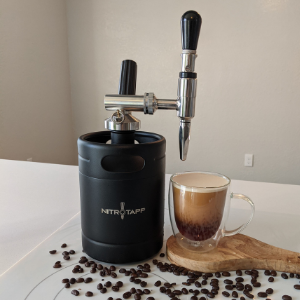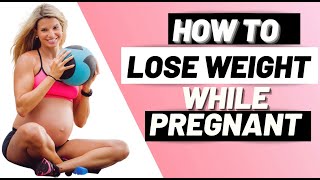
There are many important things to remember when designing a diabetic diet. Here are some points to keep in mind. These foods are rich in fiber and low on the glycemicindex. These foods are also rich in plant-based protein. For added convenience, you can prepare a meal at your home. Keep reading for more information and tips. You'll soon be eating the right way, and you'll be losing weight in no time!
Low glycemic Index Foods
Depending upon the type of carbohydrate, low GI food may have a higher glycemic value than other foods. For example, boiled potatoes have a higher glycemic index than mashed potatoes, and fruit juice has a higher GI than whole fruit. Important to consider is the GI of protein-based foods, which tend to have a lower GI.

High fiber foods
It is important to include more high-fiber foods in your diabetes diet to control hunger and blood sugar levels. Fiber is more digestible and easier to take than supplements, and it has many benefits. Cauliflower can be a diabetes-friendly option. Cauliflower has 2.1 grams of fiber per cup, and is also an excellent source of beta carotene and vitamin C. You can turn it into a pizza crust or a side dish and get all the benefits of high-fiber food!
Protein from plants
Consider including plant-based protein as part of your diet if you want to ensure that you are getting enough protein. This protein is rich in fiber, antioxidants and omega-3 fatty acid. While nuts and seeds can be added to your diet, make sure to read labels to ensure they are containing the correct amount. Tree nuts include almonds cashews and pecans. There are many seeds you can include in your diet, including hemp, sesame, chia and sesame.
Home-cooked meals
Harvard University research shows that cooking at home can help lower your risk for Type 2 Diabetes. A busy lifestyle has resulted in families opting for takeout or eating out more frequently. The study shows that cooking time has declined by 30% in the last 50 years. It is suggested that diabetics focus on fruits, vegetables, and lean proteins, in addition to nonstarchy foods.
Avoid glazed or fried foods
Avoiding greasy foods and excessive fat is one of the most important things for diabetics. This guide is a simple reference for diabetics. It also lists food terms such low-fat/high-fat and trans-fat. To learn more, read Diabetes For Dummies by Dr. Alan L. Rubin, or consider consulting with a dietitian or diabetes educator for advice. It is possible to adjust some of the recommendations to account either high or low blood sugar. It is possible to stay on track by learning healthy cooking tips and choosing the right foods for diabetes.

Carbohydrate counting
A good way to improve blood glucose control is by carbohydrate-counting on your diabetes diet menu. Carbohydrate counting is an approach that focuses on keeping the total carbohydrate intake of each meal the same, so you can better control your glucose levels. The American Diabetes Association introduced it in 1994 when they changed their dietary guidelines and removed a ban on sugar-containing foods. This new approach concentrated on total carbohydrate intake while customizing meal plans to suit individual patients.
FAQ
How can busy people lose weight
It is best to eat less and exercise more to lose weight.
Overeating will lead to weight gain. You will gain weight if exercise isn't enough. You can start losing weight if you combine these simple habits.
What Weight Loss Can You Expect In One Week?
Your current body fat percentage will determine how much weight you can lose. To begin, you need to determine how much weight that you would like to lose. Next, find your BMI (Body Mass Index). Your BMI will tell you how much weight to lose. If your BMI is 25 or greater, you're overweight. If your BMI reads 30 or more, you are likely obese.
For example, let's say you have a BMI of 28.7 and are 200 pounds. This means that you'd need to lose around 70 pounds to get down to a healthy weight range. To see if you're overweight, visit www.healthyminds.com/bmi/.
Once you know your BMI, this formula will allow you to determine how many pounds per week you'll be able to lose.
(Your Goal Weight - Current Weight)/BMI * 7 Number Of Pounds Lost Per Week
You would need to do 2 weeks of exercise to lose 50 lbs in one month. This is equal to 56 days. Divide that by 7 pounds per week. This works out to 8.3 lbs per week.
You could also try this calculator from www.weightlosscalculator.net. This calculator gives you an estimate of how many calories are needed to lose 1 pound per day.
Are cardio exercises a good way to lose weight quickly?
Cardio exercises are great for burning calories and helping you lose weight. It depends on how fat you have and what exercise you do.
Cardio exercises might not be enough to lose excess weight if your body is overweight.
You need to combine them with dieting and other types of exercise.
If you are looking to lose weight quickly, cardio exercises such as running and jogging can be helpful. These types of exercises burn more calories per hour than any other exercise.
You should train resistance to gain muscles, not fat. Resistance training requires the use of free weights and machines as well as elastic bands.
To lose weight fast, you need to combine cardio exercises with resistance training.
A combination of cardio and resistance training will help you lose weight quickly.
What side effects can intermittent fasting have?
Intermittent fasting has no known side effects. Some minor issues might occur if you do not plan your meals properly.
If you skip breakfast, your day might be interrupted by irritability. Headaches, dizziness, fatigue and muscle cramps are all possible.
These symptoms usually resolve within a few weeks.
How long should I fast intermittently to lose weight
The answer may not be as straightforward as you think. When determining the number of days you should fast for optimal fat reduction, there are many factors to consider. These are:
-
Your age. For example, if you're young (under 40), intermittent fasting may be too difficult for you because you have less time to recover from each day's fast. However, intermittent fasting may be too difficult for older people (over 60) who might not have the energy to continue a long period of daily fasting.
-
Your current body composition. Your current body composition. If you have a lot more muscle mass than you need, then you will likely be more successful with longer fasting periods. Shorter fasting might be more appropriate for you if you have less muscle mass.
-
How physically active are you. You may need to increase your fasting time if you exercise often. This will ensure you get enough rest between workouts.
-
Your past medical history. Extra fasting may be necessary for people who have heart disease, diabetes, cancer, or other medical conditions.
-
How well do you tolerate stress? Stressful situations often cause us to eat more. To avoid this problem, you may need to increase the length of your fasting windows.
-
What type of diet do you follow? Certain diets, like ketogenic diets, may require even longer fasting periods.
-
Your sleep quality. The quality of your sleep is also a factor in increased appetite and decreased metabolism. Therefore, it may take some experimentation before determining what works best for you.
-
The amount you eat of protein. A higher intake of protein may result in lower blood sugar levels. This would allow for you to fast more often.
-
Individuals who are trying lose or gain weight will require longer fasting times than those who are trying.
-
What proportion of calories do your fasting hours allow you to consume? You might lose more fat if your daily calories are lower than those you consume.
-
Your overall fitness level. A person who is very fit will burn more calories every day because they are faster.
-
Your gender. Women tend to have a greater appetite than men, so they might need to fast for longer periods. Women may only fast for 20-30 mins each morning because they have a smaller appetite.
-
Your lifestyle. Are you someone who gets plenty of physical activity? Do you exercise multiple times a week or do you just go to the gym? Does your job involve sitting at a desk all day long? All of these things can affect the amount of time you should fast.
-
How much money do you spend on food? It doesn't always mean that you should spend a lot of money on groceries if you eat healthy foods. It's possible to save money by purchasing whole grains rather than white bread, fruit instead of candy bars, lean meats instead fatty cuts, and fruits instead of candy.
-
You need to be able to control your hunger. Fasting may not be necessary if you don't want skip meals.
What Amount Of Exercise Is Needed For Weight Loss?
The amount of exercise needed for weight loss depends on several factors, including age, gender, body type, and how much you weigh. However, generally speaking, most people need at least 30 minutes of moderate physical activity five days per week.
The American College of Sports Medicine recommends 150 minute of moderate-intensity aerobic activities per week. These should be done over three days.
For example, if your goal is to lose 10lbs, aim for 300 minutes of moderately intense exercise per week. This includes activities like jogging or running, swimming laps and biking.
If you're just starting out, consider doing 20 minutes of vigorous activity thrice weekly. This could be lifting weights, sprinting, jumping rope, and fast walking.
Aerobic exercise helps to build muscle mass and burn calories. Muscles burn more calories than fat. So building muscle while losing weight may help you achieve your goal faster.
Statistics
- One 6-month study showed that simply doing 11 minutes of strength-based exercises 3 times per week resulted in a 7.4% increase in metabolic rate, on average. (healthline.com)
- It's estimated that half of all American adults attempt to lose weight every year (1Trusted (healthline.com)
- Another study found that 24 weeks of weight training led to a 9% increase in metabolic rate among men, which equated to burning approximately 140 more calories per day. (healthline.com)
- According to Harvard Health, it's estimated that a 155-pound (70-kg) person burns around 167 calories per 30 minutes of walking at a moderate pace of 4 mph (6.4 km/h) (5). (healthline.com)
External Links
How To
How to get rid of weight
One of the best ways you can lose weight is to exercise. Many people do not know how they should exercise. You should do cardio exercises, such as swimming, running, walking, swimming, etc., as well as strength training exercises, such as pulling up, pushingups, pull-ups and lunges. Combining both of these exercises will help you lose weight the most. If you want to start exercising, then try to find some friends who are willing to join you in your journey. You can exercise at a gym or simply walk around the block. No matter which type of activity, you need to be consistent with it. It's easy for things to go wrong when you start exercising. Just keep going!